Update: On March 3, 2021 the SBA announced changes for calculating PPP loan amounts for those who are self-employed and file Schedule C. Learn more here.
Not sure what to do after PPP & EIDL? Nav has a network of small business lenders to connect you with.
With another round of SBA coronavirus relief loans on the horizon, it makes sense to revisit some of the criteria that will impact how successfully small businesses are able to leverage the funds from the PPP. Because it’s so tied to whether or not forgiveness will be available, it’s important to understand what is considered payroll for Paycheck Protection Program financing.
After navigating the morass that has been the application process, once your business has PPP funds, it will not only be important to be mindful of how you use those funds, you will also need to be mindful of when you use them.
Future PPP Loan Forgiveness Should be “Top of Mind” When You Apply
Although PPP loans come with the most attractive business loan terms most of us will ever see in our lifetimes (1% for 2 years), you will probably want to make sure you take the proper steps to ensure that a future PPP loan, or a current loan if you made it through the first round, is forgiven. The PPP was intended to allow business owners, including those who are self-employed, to apply for a loan amount 2.5 times their average monthly payroll. The following SBA payroll criteria will help you make the calculation to determine your loan amount.
Average Monthly Payroll costs include:
- Salaries, tips, and commissions
- State and local employer payroll taxes
- Health insurance premiums
- Employee retirement plans
- Net profit (if you’re self-employed)
The CARES Act SBA Loan Calculator will help you determine how much you may qualify for within the PPP program before you start an application.
How Lenders Are Verifying Payroll for PPP Loans
Documenting payroll was a challenge for many small businesses applying for a PPP loan over the past couple of weeks. To ensure your business is able to qualify for as much loan assistance as possible, here are the documents you will need to present when you apply.
Payroll Documents Required for a Paycheck Protection Loan Application
The CARES Act states that you must submit the following documents to your lender with an application requesting forgiveness for your PPP loan, so you should make sure you are thinking in terms of documenting how you spend the loan proceeds.
- Payroll tax filings reported to the Internal Revenue Service
- State income, payroll, and unemployment tax filings
- Documentation, including cancelled checks, payment receipts, transcripts of accounts, or other documents verifying payments on covered mortgage obligations, payments of covered lease obligations, and covered utility payments
- Any other documentation the SBA Administrator determines is necessary.
The SBA guidance also states that, “No eligible recipient shall receive forgiveness under this section without submitting to the lender that is servicing the covered loan the documentation required…”
What are the Required Documents for net profit (if you’re self-employed)?
Self-employed individuals without any employees and file IRS Form 1040-C will need to calculate their payroll expense differently. Use net profit for the business from 2019 as reported on line 31 of the Schedule C. You can use up to $100,000 of net profit, divided by 12 to get the average monthly net profit. Then multiply that number by 2.5 to get the maximum loan amount. If you haven’t filed your 2019 or 2020 taxes yet, that is OK. You will need to have them prepared though to submit your application.
Note that as of March 3, 2021, self-employed borrowers may choose between net profit (line 31) or gross income (line 7) to calculate their PPP loan amount. You can read more about applying as a self-employed individual HERE.
Make Certain Your Books are in Order to Verify Your Forgiveness Claim
To ensure that you receive forgiveness for your PPP loan, you’ll want to make sure you make your bookkeeping a priority—regardless of whether you take care of it yourself or you have a full-time bookkeeper or accountant.
In addition to the required documents for state and local employer payroll taxes mentioned above, you’ll also need to verify some other payroll expenses regarding:
- Required Documents for health insurance premiums including cancelled checks, payment receipts, transcripts of accounts, or other documents verifying payments of employee health benefits.
- Required Documents for employee retirement plans including cancelled checks, payment receipts, transcripts of accounts, or other documents verifying payments toward contributions to your employee’s retirement accounts.
You will also need to certify that the documentation presented is true and correct. The amount for which forgiveness is requested was used to retain employees, make interest payments on covered mortgage obligations, make payments on a covered rent obligation, or make covered utility payments—along with any other documentation the SBA Administrator determines is necessary.
Start Documenting Expenses as Soon as You Receive the Funds
PPP funds are intended to cover your payroll expenses for the eight-week period following the first disbursement of the PPP funds. In other words, the clock is ticking and you need to make sure you document every expense as soon as you receive funds—or you could run the risk of losing the loan forgiveness. The lender, according to the SBA, must make the first disbursement within 10 calendar days.
Some business owners are putting the PPP funds in a separate bank account to make tracking and accounting payroll expenses easier. That’s not a requirement. My advice is to establish a practice to ensure you can account for exactly how you used the funds and verify with the documents mentioned above.
The payroll expenses eligible for forgiveness are the same as those you used to determine your loan amount:
- Payroll costs
- Interest on a covered mortgage obligation
- Any payment on a covered rent or lease obligation
- Any covered utility payment
According to the SBA payroll guidelines for the PPP, a covered mortgage is a debt “…incurred in the ordinary course of business that is a liability of the borrower; is a mortgage on real property; and was incurred before February 15, 2020. A covered rent obligation must be in force before February 15, 2020” A “covered utility payment” means “…payment for a service for the distribution of electricity, gas, water, transportation, telephone, or internet access for which service began before February 15, 2020.”
Non-payroll expenses cannot exceed 25% of the loan amount to qualify for forgiveness.
How Do I Calculate My Employment Taxes Into my PPP Application?
Because I am not a lawyer or tax accountant, I will share here the SBA’s guidance on the matter and encourage you to speak with your tax attorney or accountant.
“Under the Act, payroll costs are calculated on a gross basis without regard to (i.e., not including subtractions or additions based on) federal taxes imposed or withheld, such as the employee’s and employer’s share of Federal Insurance Contributions Act (FICA) and income taxes required to be withheld from employees. As a result, payroll costs are not reduced by taxes imposed on an employee and required to be withheld by the employer, but payroll costs do not include the employer’s share of payroll taxes.
“For example, an employee who earned $4,000 pr month in gross wages, from which $500 in federal taxes was withheld, would count as $4,000 in payroll costs. The employee would receive $3,500, and $500 would be paid to the federal government. However, the employer-side federal payroll taxes imposed on the $4,000 in wages are excluded from payroll costs under the statute.”
What If I Don’t Qualify for Forgiveness?
If you don’t qualify for full or partial forgiveness, whatever isn’t forgiven will be treated as a loan with a 1% interest rate and a two year repayment term. Likely the best small business loan terms most of us will ever see again.
Nav’s Final Word: SBA Payroll Requirements
If you’ve ever heard the phrase, start with the end in mind, it’s very appropriate here. As you apply for this new round of PPP funds make sure you are thinking about how much you apply for and how you plan to use it with forgiveness in mind.
- Make sure your bookkeeping and accounting process are in order.
- Document every expense so you can validate it later when you apply for forgiveness.
- Talk to your attorney or tax advisor to make sure you are clear on how you can, or can’t, use the funds.
You can learn more about PPP loan forgiveness HERE.
Please keep in mind this information is changing rapidly and is based on our current understanding of the programs. It can and likely will change. Although we will be monitoring and updating this as new information becomes available, please do not rely solely on this for your financial decisions. We encourage you to consult with your lawyers, CPAs and Financial Advisors. To review your real-time funding options with one of Nav’s lending experts, please contact us.
This article was originally written on April 22, 2020 and updated on March 4, 2021.
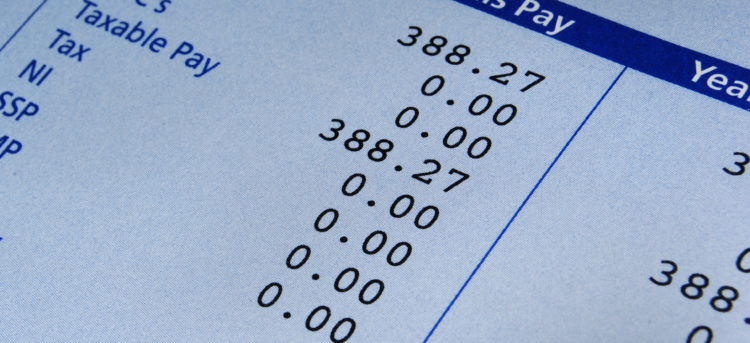
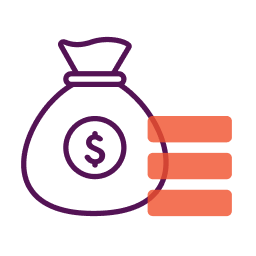
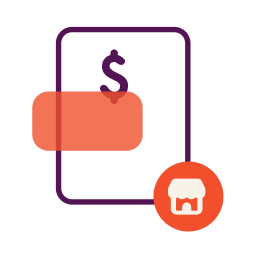
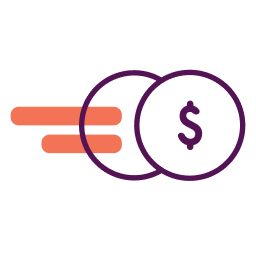
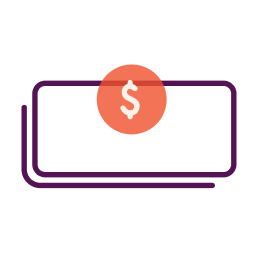
I had a identity theft situation and filed taxes just weeks ago and didn’t have the chance nor time to get registered for a ppp loan…. is there away that I can apply for the ppp loan and forgiveness of the loan at this point in time?
Unfortunately it is now closed. EIDL is still open however. You can apply at SBA.gov.
Can the cost of a Payroll Service company be included in the PPP calculation?
I don’t think so but I can’t readily find that information. Check with your payroll service provider – they should know.
I’m a commission furniture salesman. The store closed for two months now that we’re open and I’m selling furniture it takes time for the furniture to come in and be delivered which I get paid on. Is my employer suppose to pay me my average pay per day that I work until at my commission is equal or greater than my average? I’m confused and frankly not if my employer is confused about what I should be paid while working. I appreciate your feedback on this.
Thank you, Leonard
PPP doesn’t require employers to maintain individual employee’s payroll at a certain level but reducing headcount or wages may affect how much of the loan may be forgiven. If you are not being paid for work you are supposed to be paid for that would be an issue for your state department of labor, the federal Department of Labor or an employment attorney.
I have a question on how the loan payroll part is being spent! Is the equal amount suppose to be spent on each employment and what if an employee only worked 15 hrs a week before all this and our boss is paying her a full 80 hours
That’s not a question we can answer. If you suspect PPP loan fraud you can report it to an attorney who handles those types of cases or to the Office of the Inspector General.
What’s is covered for the employees? So the employee risking there life and family jus so a business can pay there loan off. What about the employee expenses.